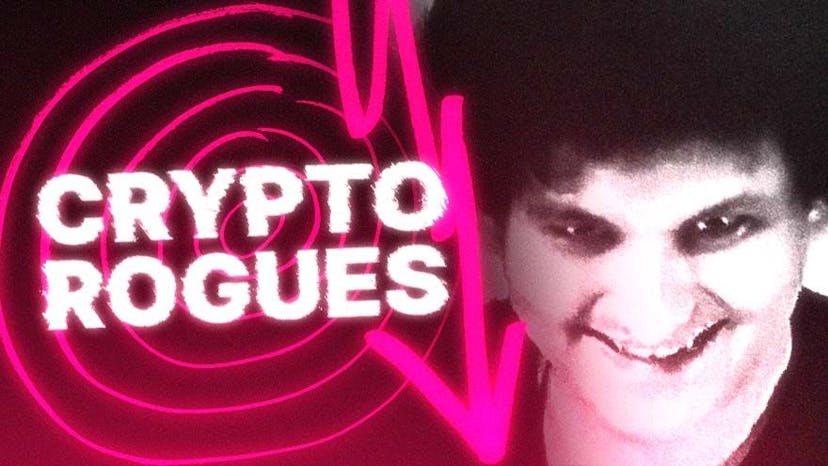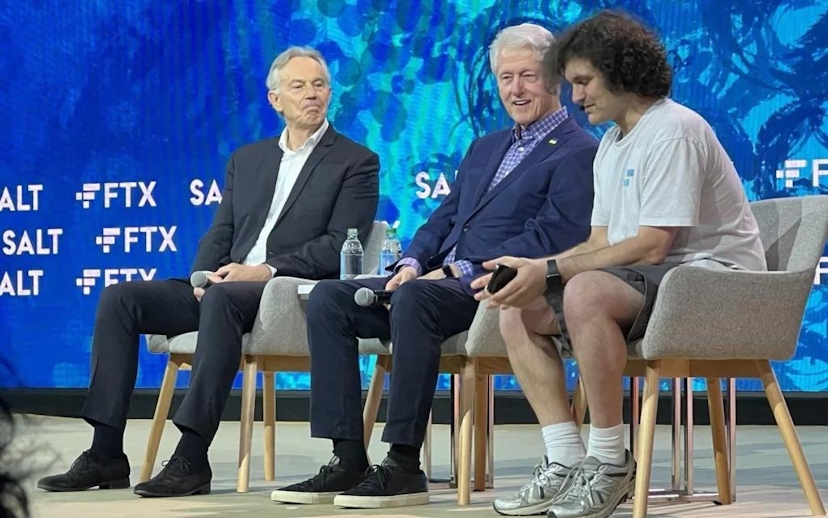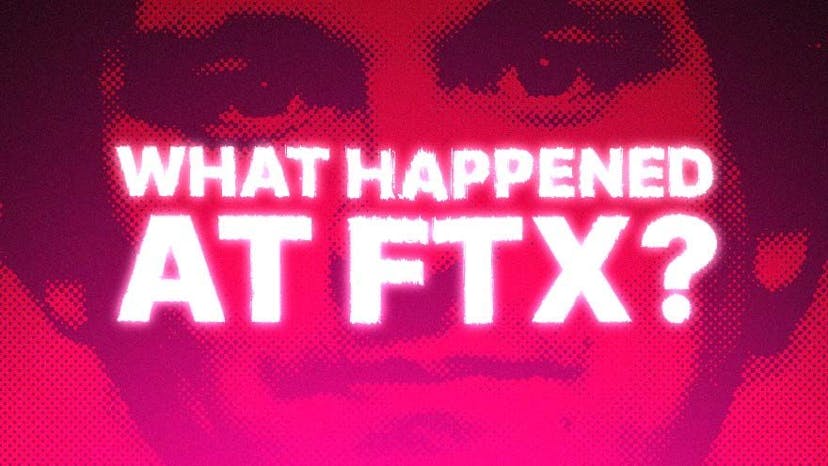SBF and Fellow Miscreants Left Customers Reeling and Crypto Damaged
Mismanagement and Alleged Crimes Stained Crypto With a Litany of Scandals in 2022
By: Aleksandar Gilbert • Loading...
Research & Opinion
Talk about swagger. On March 9, a pseudonymous crypto trader called Algod dismissed the LUNA token a “big ass Ponzi” and threatened to “short it with size.”
LUNA was the native token of the Terra blockchain, and on that day, it had a market capitalization of $36B. Algod’s threat to open a sizeable short position prompted an equally macho response from Terra co-founder Do Kwon, a South Korean software developer.
Taunting Reply
“Yeah but your size is not size,” Kwon wrote on Twitter. “$10 short incoming, everyone take cover.”
The taunting reply was so on-brand. Kwon had a reputation as an in-your-face founder brimming with arrogance. But who could blame him? Terra, LUNA and the dollar-pegged TerraUSD stablecoin formed a blockbuster ecosystem with an aggregate $60B market value. He was a billionaire, at least on paper.
No surprise, he accepted Algod’s $1M bet on whether a LUNA token would be worth more in one year’s time. Two months later, Kwon’s bet was the least of his worries. After UST slipped its peg, LUNA cratered, as did Anchor, another linked offering, and the Terra empire lay in ruins.
It was crypto’s ur-crash — the first domino, the collapse that triggered the further collapses to come in 2022. It was the event that turned a bear market into a crypto ice age.
In a classic story arc, Kwon morphed from a braggart into a fugitive. After prosecutors in his native South Korea sought to question him, the entrepreneur lit out for the territories.
In a classic story arc, Kwon morphed from a braggart into a fugitive. After prosecutors in his native South Korea sought to question him, the entrepreneur lit out for the territories. Interpol issued a “red notice” seeking his arrest and rumors surfaced he’d materialized in Dubai and Serbia. He’s still on the run. All along, he has protested his innocence.
Kwon has expressed remorse for the crash.
“I am heartbroken about the pain my invention has brought on all of you,” he tweeted in May. “I still believe that decentralized economies deserve decentralized money – but it is clear that $UST in its current form will not be that money.”
Exposure
All along, he has maintained his innocence, however, denying that he is, as prosecutors insist, on the run, and suggesting Terra’s collapse was orchestrated by FTX founder Sam Bankman-Fried.
Remarkably, Do Kwon has been eclipsed by a raft of other rogues. There was Su Zhu and Kyle Davies, the co-founders of Three Arrows Capital, the $10B hedge fund whose exposure to Terra poleaxed its own balance sheet and plunged the firm into bankruptcy.

Do Kwon dreaming of better times…
Like their friend Kwon, Zhu and Davies were cocky. The pair of Andover grads had founded their crypto hedge fund in 2012, which eventually grew to manage billions in assets. The pair made big bets on Grayscale Bitcoin Trust and LUNA. When the value of the latter token cratered overnight, they were desperate to raise cash and begged whales for money and sold so much crypto it sent ether to a multi-year low.
It didn’t work. Investors demanded Three Arrows return their money. For awhile, Zhu and Davies effectively vanished, ignoring creditors, journalists and court-appointed liquidators.
Liquidators on the Hunt
Of the $4B creditors say they are owed, liquidators have secured about $35M. They blame the lack of progress on Zhu and Davies, whom they accuse of being uncooperative and of fleeing to jurisdictions “known for difficulties in enforcing foreign court orders.”
Crypto lender Celsius, in turn, was among Three Arrows’ victims, having lent the firm $75M. But it turns out they too may have been playing fast and loose with customer money.

SBF co-hosted a crypto confab in the Bahamas in April with VVIPs.
Crypto analytics firm Arkham Intelligence found Celsius entrusted more than $500M “to an apparent asset manager who engaged in high-risk leveraged crypto trading strategies” and ultimately lost $350M.
The insolvent firm was forced to halt customer withdrawals and file for bankruptcy over the summer. But not before CEO Alex Mashinsky withdrew $10M of his own money, The Financial Times reported.
As it happens, the collapse of Terra also put the most high-profile figure in crypto himself in deep trouble — Sam Bankman-Fried. While SBF postured as a safe pair of hands in a volatile industry, he and his colleagues were racing to plug multi-billion dollar holes in the balance sheet of his hedge fund, Alameda Research, thanks to exposure to Terra’s tokens.
Covering Losses
According to the U.S. Securities and Exchange Commission, it was these losses that drove Bankman-Fried to plunder customer assets at FTX and transfer them to Alameda to cover losses.
The MIT-educated son of Stanford Law School professors, Bankman-Fried was the antithesis of Kwon and the Three Arrows founders. Rather than evengelize crypto for its own sake, he saw the market as a pathway to accumulate riches for the benefit of charity. A subscriber to “Effective Altruism,” a philanthropic approach that takes a long-term view to giving, Bankman-Fried placed crypto in a context TradFi investors could more easily understand.
He played nice with lawmakers by lobbying for regulation other crypto founders found damaging. Banmkan-Fried drew up an “industry norms manual” to set guidelines for crypto. And he happily stepped into the role of crypto’s ringmaster — at a conference he co-hosted with hedge fund impresario Anthony Scaramucci in the Bahamas in April, Bankman-Fried moderated a discussion on global affairs with Bill Clinton and Tony Blair.
As a result, he became the face of crypto for the normies. Just to make sure, he paid hundreds of millions of dollars for the naming rights to sports arenas and Formula One teams, and recruited “brand ambassadors” such as NFL superstar Tom Brady and NBA legend Stephen Curry. Consistently attired in a T-shirt and Bermuda shorts, Bankman-Fried played the tech genius role to the hilt.
Yet it was all apparently a sham. In an interview with Vox, Bankman-Fried agreed that the “ethics stuff” was “mostly a front.”
Moreover, the Feds allege Bankman-Fried’s twin ventures — FTX and Alameda — were frauds from the start in 2019.
As Bankman-Fried awaits extradition to the U.S. to face federal charges of fraud and conspiracy, more than one million of FTX’s clients are left to pick up the pieces, if any.
FTX’s collapse was “old-fashioned embezzlement,” according to John Ray, the corporate turnaround specialist who has since taken control of FTX.
Alleged Crimes
“This is just taking money from customers and using it for your own purposes,” Ray told lawmakers at a congressional hearing earlier this month. “Not sophisticated at all. Sophisticated, perhaps, in the way, they were able to sort of hide it from people — frankly, right in front of their eyes.”
While Bankman-Fried’s alleged crimes may be old-fashioned embezzlement and fraud, they’ve left the crypto industry with a herculean task — winning back a semblance of trust from the general public.
Advertisement
Get the best of The Defiant directly in your inbox 💌
Know what matters in Web3 with The Defiant Daily newsletter, every weekday
90k+ investors informed every day. Unsubscribe anytime.
